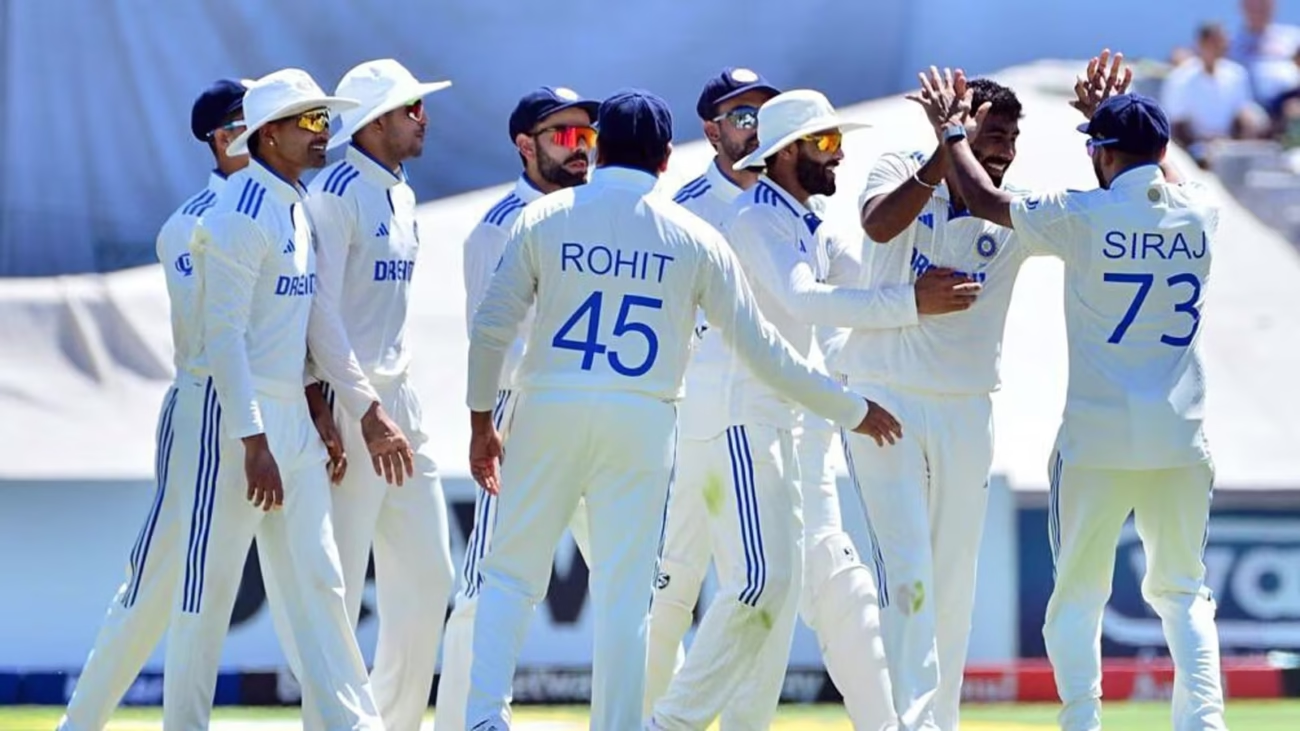Overview: The Test Cricket Marathon
The sport’s most demanding and traditional format is test cricket, which lasts five days and tests a player’s mental toughness, physical stamina, and strategic thinking.
Test cricket requires hours of batting, bowling, and fielding under extreme pressure, in contrast to T20 or ODI formats where matches only last a few hours. In test cricket, fitness is just as important as skill, as demonstrated by the just finished third day of the fourth test at Old Trafford.
Fans were reminded by Joe Root’s 150-run marathon and Ben Stokes’s 77 before cramping out that test cricket players battle against injuries, cramps, and exhaustion in addition to the opposition.
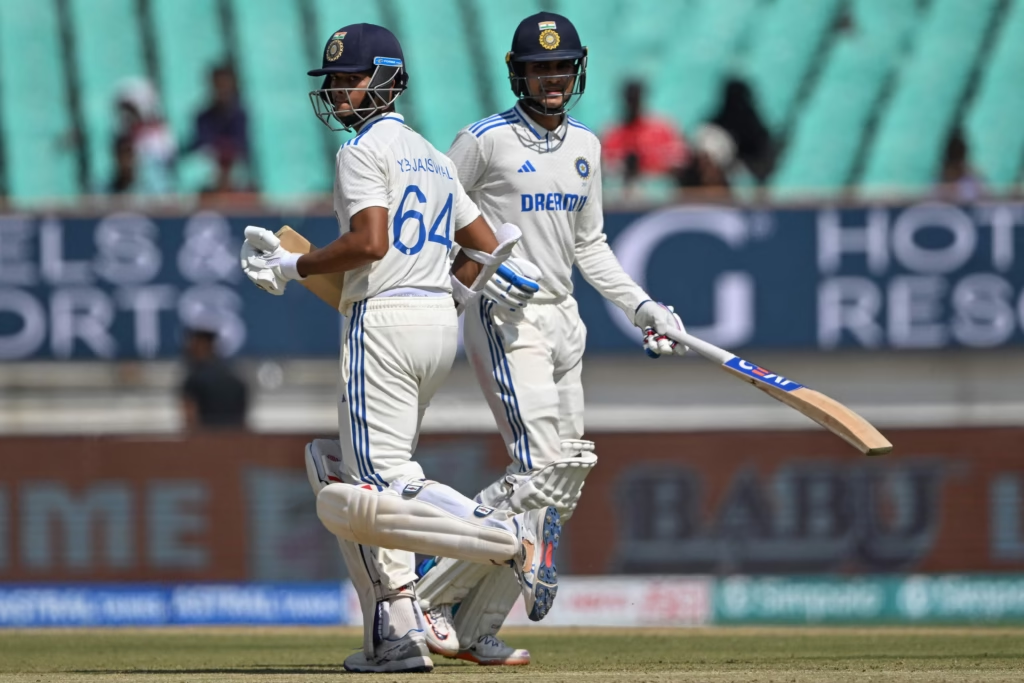
5 Days of Combat: Test Cricket Greatest Fitness & Difficulties
The headlines stretched beyond the scoreboard as India struggled to stay in the match and England reached 544/7. Player fitness—how well-prepared cricket players are to withstand the demanding schedule of test cricket—became the main topic of conversation.
1. Test cricket’s physical demands
There’s a reason why test cricket is called a “test.” Every facet of a player’s fitness is put to the test. Athletes suffer from fatigue, dehydration, and muscle strain throughout a five-day period.
• The challenge for batsmen : Strong core muscles, stamina, and mental concentration are necessary for hours of batting. It took more than just skill for Joe Root to score 150 runs in the 4th Test; he also needed to be able to focus, endure hours of sun exposure, and take in more than 200 deliveries.
• Bowlers’ grind : Quick bowlers who frequently dash in with explosive power, such as James Anderson or Jasprit Bumrah, bowl 20–25 overs per day. Their hamstrings, shoulders, and knees get worn down as a result.
• Workload of fielders : In test cricket, fielding is quite demanding. Players must be agile and mentally attentive since they spend a lot of time standing in the slip cordon, racing to save bounds, or crouching.
2. Takeaways from Day 3: When Fitness Started to Take Centre Stage
Test cricket can push players to their limits, as demonstrated by the 4th Test at Old Trafford.
2.1 Root’s 150 : A Masterclass in Fitness
Joe Root’s innings was a demonstration of endurance as much as skill. Excellent cardio and muscular fitness are required to run swift singles in humid circumstances, face the fiery spells of Indian pacers, and remain on the crease for over 300 minutes.
2.2 The Cramp Incident and Stokes’s 77
All-rounder and captain Ben Stokes of England played a tough 77 but was forced off the pitch by excruciating cramps. His illness served as a reminder of the physical toll that test cricket takes, particularly on players who bowl and bat. Stokes’s battle served as a reminder that recuperation, nutrition, and hydration are equally as crucial as training, even though he returned later.
2.3 Indian Bowlers’ Fatigue
India’s bowling attack, featuring Mohammed Siraj and Mukesh Kumar, showed signs of fatigue as they failed to maintain consistent pressure in the final session of Day 3. It underlined how test cricket not only demands skill but also endurance to deliver across all five days.
3. The Physical Difficulties of Test Cricket Compared to Other Formats
Because of its length and unpredictability, test cricket is special.
• Extended sessions : Although players spend six hours a day on the pitch, divided into three sessions, the mental toll of playing is taxing.
• Weather-related issues : Dehydration and energy loss can result from heat, humidity, or cold winds.
• Mental exhaustion : It is taxing to remain vigilant for every ball for five days. A wicket or missed catch might result from even a small moment of distraction.
Test cricket is a marathon that necessitates precise energy management, in contrast to Twenty20 cricket, when energy spurts last only 20 overs.
4. Fitness’s Significance in Test Cricket
4.1 Conditioning and Strength
Test cricket players today adhere to rigorous training regimens that emphasise explosive movements, endurance, and core strength. For extended periods of time, fast bowlers require strong legs and backs, and batsmen require upper body strength for balance and stroke force.
4.2 Training for Endurance
It takes extraordinary cardiovascular fitness to field for extended periods of time, bowl multiple overs and run between wickets. Players frequently incorporate swimming, long-distance running, and interval training into their routines.
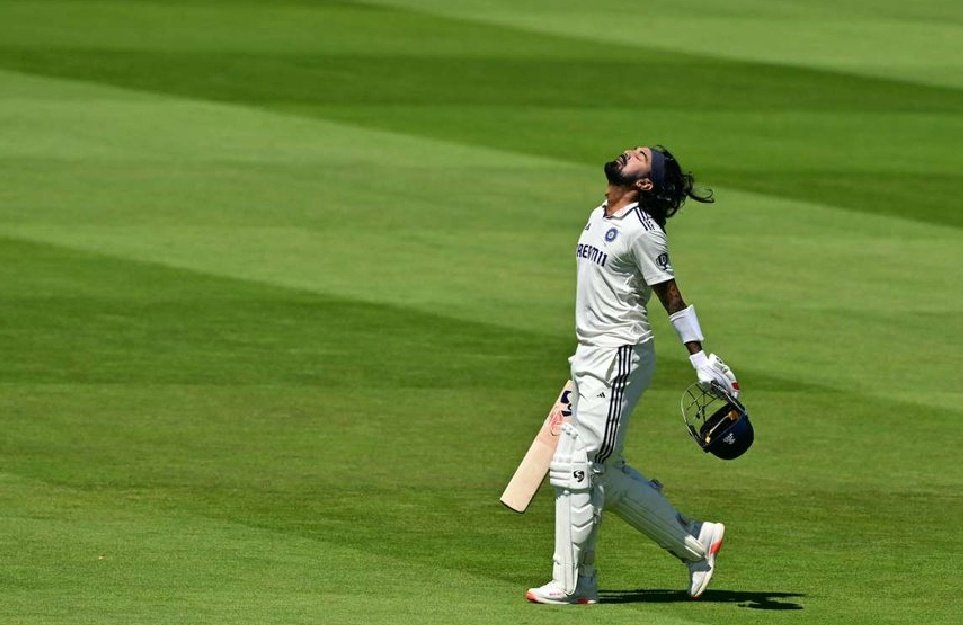
4.3 Mental Health
In test cricket, mental toughness is essential. To maintain attention under duress, players practise breathing techniques, visualisation, and meditation. A batter with a reputation for putting in long batting sessions, such as Cheteshwar Pujara, blends mental toughness with physical stamina.
5. Typical Test Cricket Fitness Obstacles
5.1 Cramps and Muscle Fatigue
Muscle weariness is exemplified by Ben Stokes’ cramps on Day 3. Cramping is caused by dehydration and overuse of muscles throughout extended periods of time.
5.2 Accidents
Because bowling is a repetitive movement in test cricket, hamstring strains, shoulder injuries, and stress fractures are prevalent. Due to these ailments, players like Hardik Pandya and Jofra Archer have missed series.
5.3 Recuperation Duration
Players frequently don’t get enough sleep in between games because of their busy schedules. To sustain performance during a series, recovery techniques including massages, ice baths, and physical rehabilitation are crucial.
6. How Cricket Players Get Ready for Test Fitness
6.1 Conditioning Before the Series
Players undergo 4-6 weeks of conditioning prior to a test cricket series, with an emphasis on:
• Strength training
• Endurance runs
• Net sessions to mimic match situations
6.2 Practices for Match Day
To stay in top shape, athletes adhere to rigorous regimens that include food, warm-ups, and hydration. Long batting or fielding workouts require eating foods high in energy and keeping electrolyte balance.
6.3 Recuperation in Between Days
Just as important as training is sleep and recuperation. To keep an eye on each player’s workload and level of fitness, teams employ trainers and physiotherapists.
7. Examples of Fitness from the Fourth Test
We learnt both uplifting and sobering lessons from the 4th Test at Old Trafford:
• Joe Root’s 150 demonstrated the need of mental toughness and preparedness.
• Ben Stokes’ cramps demonstrated how even the most fit athletes can struggle if they don’t get enough rest and water.( https://fitdamn.com/the-amazing-journey-of-ben-stokes/ )
• Despite their brilliance, India’s bowlers lost momentum in the later sessions as they were unable to sustain their energy levels.
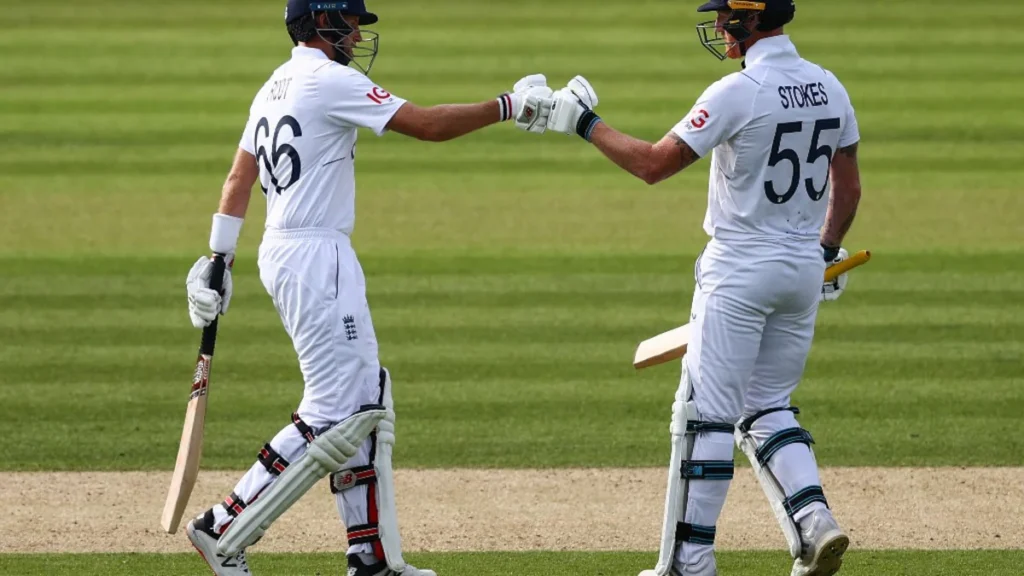
8. Contemporary Test Cricket Fitness Techniques
8.1 Information and Technology
These days, teams keep an eye on athletes using GPS trackers, fitness applications, and workload statistics. To avoid injuries, jogging lengths, bowling speeds, and exhaustion levels are monitored.
8.2 Recovery Science’s Function
Test cricket teams now routinely use modern physiotherapy, compression gear, and cryotherapy.
8.3 Players That Rotate
To control workload, teams frequently switch up their bowlers between tests. To prevent weariness, England, for instance, alternates quick bowlers like Mark Wood and Anderson.
9. Emotional and Mental Well-Being
Test cricket tests the mind in addition to the body. In high-pressure situations, players’ mental acuity is just as crucial as their physical endurance.
• To get ready for lengthy sessions, strategies like visualisation and mindfulness are employed.
• Emotional resilience is also necessary for handling stress and criticism.
10. Fitness Lessons Learnt from the Fourth Test
Day 3’s events demonstrate that being physically fit is essential for success in test cricket. No matter how good a player is, they cannot win a five-day match if they are unable to stay motivated, endure long hours, and recuperate fast.
Ben Stokes’ valiant but agonising 77 and Joe Root’s 150 demonstrate that fitness is a need rather than a luxury.
In conclusion, Test cricket is won by fitness.
Test cricket is about who can battle the hardest and last the longest over five days, not only about bowling and batting averages. Although the modern game has changed, test cricket’s fundamental requirement that players be at the top of their game both mentally and physically has not.
Fitness can determine sessions and even entire matches, as demonstrated by the 4th Test at Old Trafford. The guys that remain fit and motivated win, whether it’s a 150-run partnership or surviving 77 overs of unrelenting bowling.
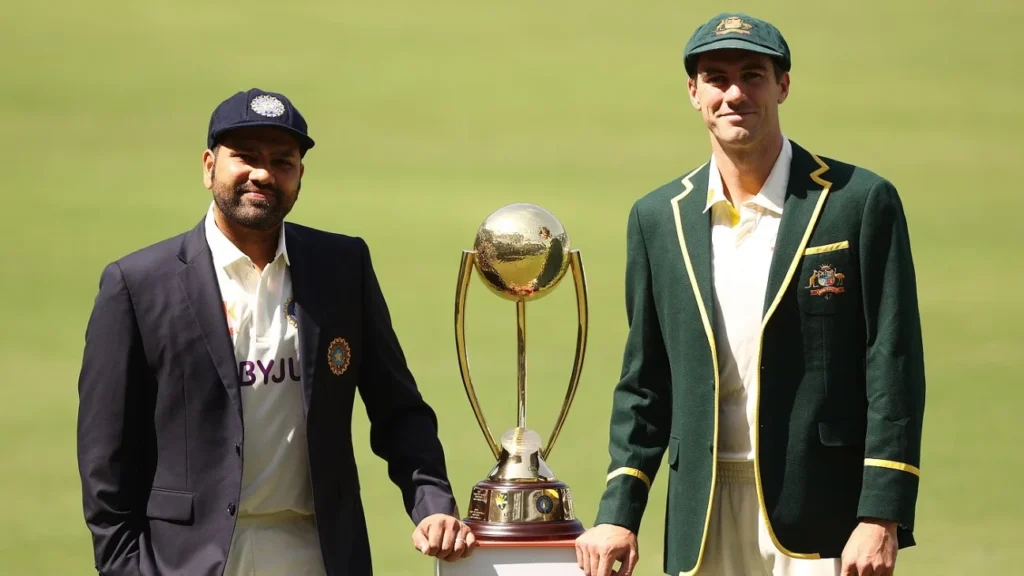
Teams will need to put even more emphasis on fitness and recuperation in the future because to the hectic cricket schedule. This implies that for cricket fans, test cricket will always be the pinnacle of competitions where talent and endurance meet fitness and glory.
Follow us on
Instagram – Damn Fitt
Twitter – https://x.com/damnn_fit
Facebook – https://www.facebook.com/profile.php?id=61578307628888
Start Your Fitness Now – ( https://fitdamn.com/the-greatest-morning-exercise-programs-for-beginners/ )👇🏻

Benefits of Workout – ( https://fitdamn.com/the-greatest-morning-exercise-programs-for-beginners-2/ )👇🏻

Let’s Know About Jasprit Bumrah’s Fitness – ( https://fitdamn.com/jasprit-bumrahs-fitness-and-bowling-routine/ ) 👇🏻

Let’s Know About Fitness Powerhouse – ( https://fitdamn.com/developing-into-a-fitness-powerhouse/ )👇🏻

Let’s Know About Rishabh Pant Fitness – ( https://fitdamn.com/rishabh-pant-a-story-of-strength-physical-fitness/ )👇🏻

Let’s Know About IShowSpeed Fitness – ( https://fitdamn.com/ishowspeed/ )👇🏻

Let’s Know About Ben Stokes Fitness – ( https://fitdamn.com/the-amazing-journey-of-ben-stokes/ )👇🏻



